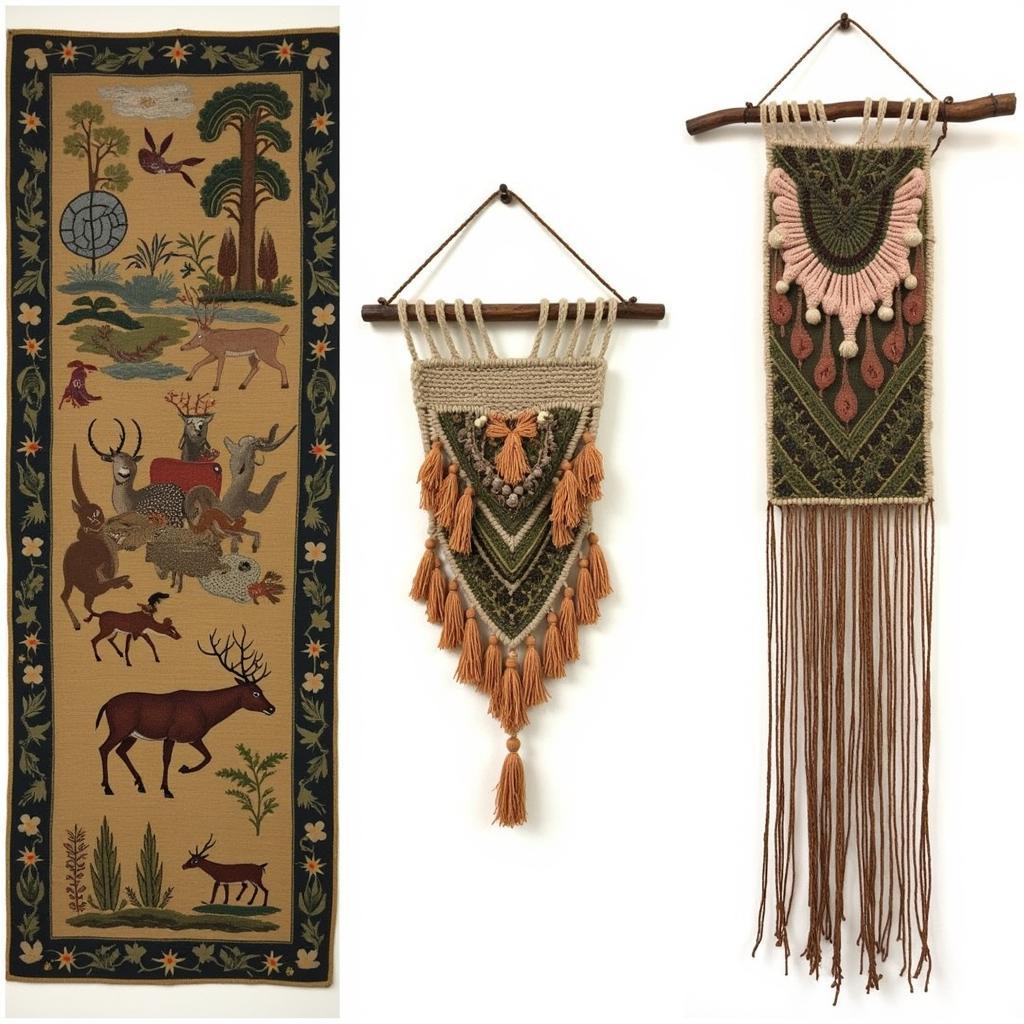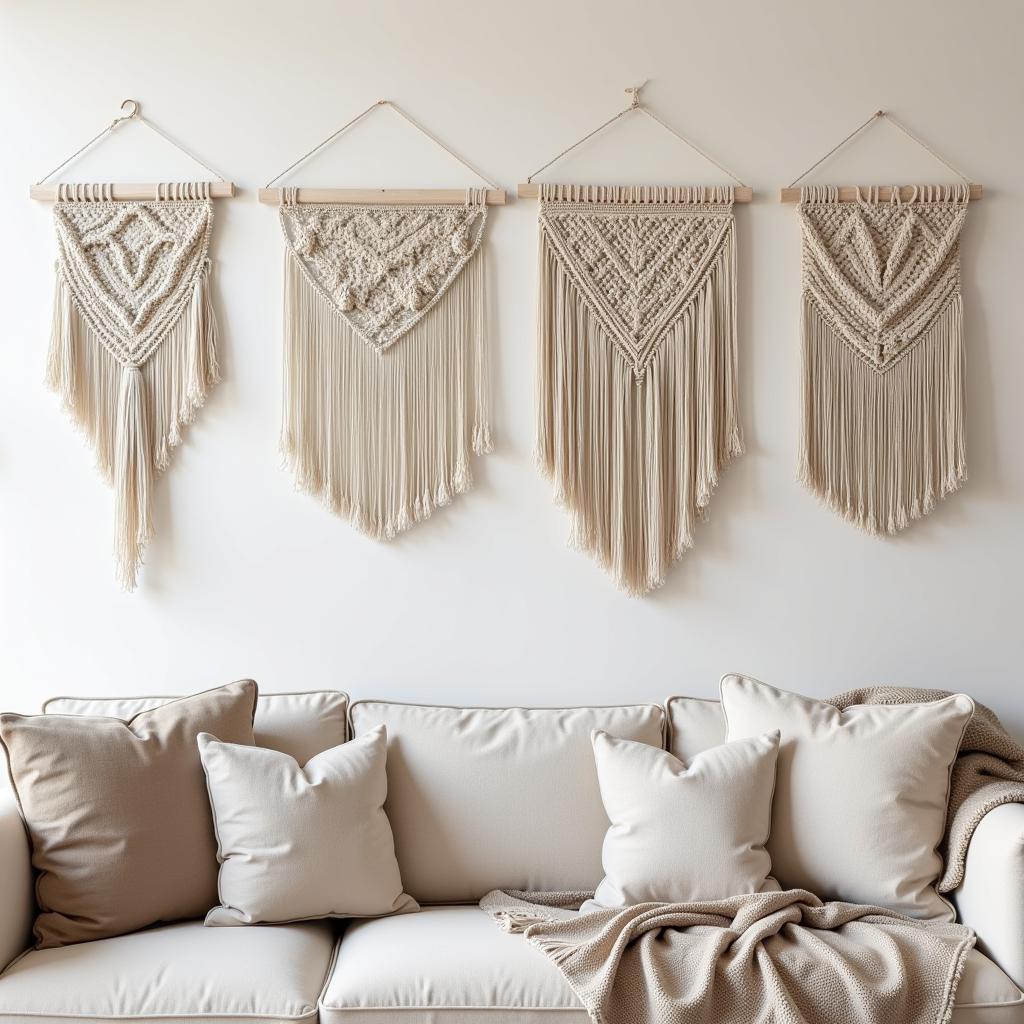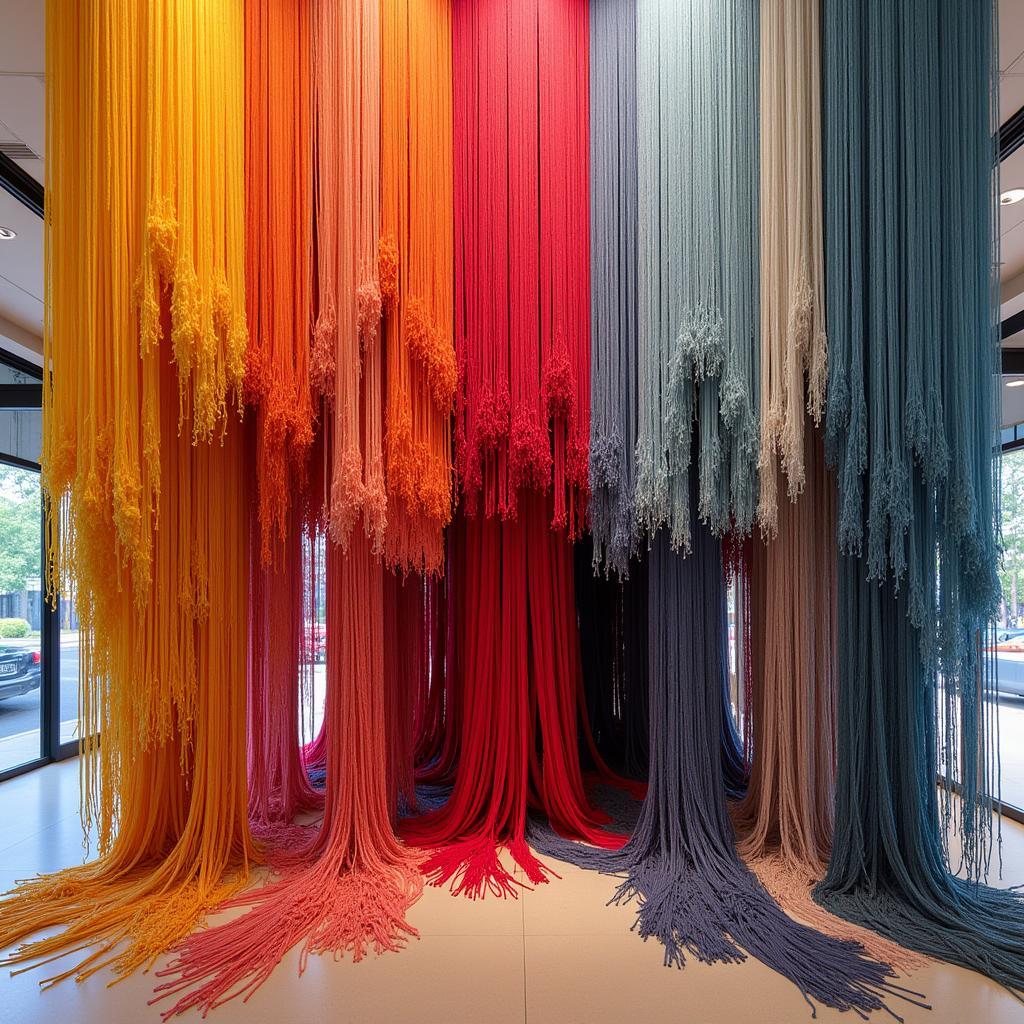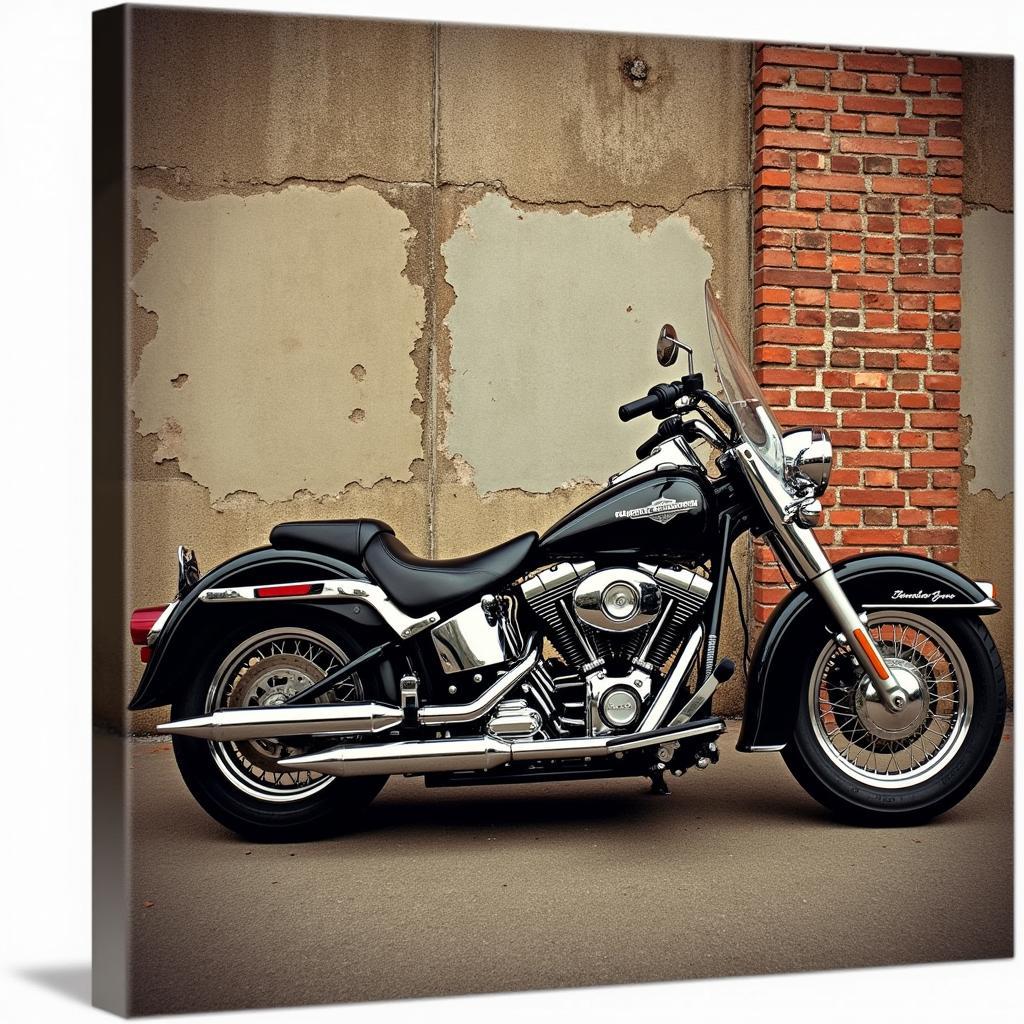Hanging Textiles as Art: A Modern Guide to Transforming Your Space
The use of Hanging Textiles As Art is experiencing a vibrant resurgence, adding warmth, texture, and visual intrigue to modern interiors. Far from traditional tapestries, this dynamic art form encompasses diverse techniques and materials, pushing the boundaries of fiber art and redefining how we perceive textiles in our living spaces.
From Ancient Crafts to Contemporary Creations: The Evolution of Hanging Textiles
 Evolution of Hanging Textiles
Evolution of Hanging Textiles
For centuries, cultures worldwide have embraced textile art, from woven tapestries adorning medieval castles to intricate embroideries narrating ancestral stories. This rich history laid the groundwork for the contemporary movement we see today, where artists blend ancient techniques with modern materials and innovative approaches.
Exploring the Spectrum of Hanging Textile Art
The beauty of this art form lies in its versatility. From the delicate intricacy of lace to the bold statements of large-scale weavings, hanging textiles offer endless creative possibilities. Let’s delve into some popular styles:
1. Macrame: Knotting Its Way into Modern Homes
 Macrame Wall Hangings
Macrame Wall Hangings
Macrame, the art of knotting cords or strings, has experienced a revival, gracing homes with its bohemian charm. Using natural fibers like cotton or jute, artists create intricate wall hangings, plant holders, and even room dividers, adding a touch of handcrafted warmth to any space.
2. Weaving: Interlacing Texture and Pattern
Weaving, a timeless technique, involves interlacing threads to form fabric. Contemporary artists experiment with diverse materials, from traditional wool and silk to unconventional elements like wire or recycled plastic, resulting in stunning textural pieces that add depth and dimension to walls.
3. Fiber Art: Pushing Creative Boundaries
 Abstract Fiber Art
Abstract Fiber Art
Fiber art encompasses a broad spectrum of techniques and materials, often blurring the lines between fine art and craft. Artists explore fiber’s tactile and expressive qualities, creating sculptural installations, mixed media pieces, and even wearable art that challenge traditional notions of textile art.
Why Choose Hanging Textiles for Your Space?
Beyond their aesthetic appeal, hanging textiles offer several benefits:
- Texture and Warmth: They introduce tactile elements, creating a cozy and inviting atmosphere.
- Sound Absorption: Textiles can help dampen sound, improving the acoustics of a room.
- Versatility: From small wall hangings to large-scale installations, they adapt to diverse spaces.
- Uniqueness: Each piece is often handcrafted, adding a personal touch to your decor.
Incorporating Hanging Textiles into Your Interior Design
- Focal Point: Use a large-scale woven tapestry or macrame piece to create a captivating focal point in your living room or bedroom.
- Gallery Wall Accent: Combine smaller textile art pieces with framed prints and photographs for an eclectic gallery wall display.
- Headboard Alternative: A dramatic textile hanging can serve as a unique and stylish headboard in a bedroom.
Caring for Your Textile Art
Proper care ensures the longevity of your textile art.
- Dust Regularly: Use a soft brush or vacuum with a low setting to remove dust.
- Avoid Direct Sunlight: Prolonged exposure can cause fading.
- Professional Cleaning: Consult a textile conservator for delicate or valuable pieces.
Conclusion
Hanging textiles as art offer a captivating blend of artistry, texture, and cultural significance. Whether you gravitate towards the bohemian elegance of macrame, the intricate patterns of weaving, or the bold statements of contemporary fiber art, there’s a style to suit every taste and interior. Embrace the warmth and visual intrigue these pieces bring, transforming your house into a haven of personalized style.
FAQs
1. What are the best fabrics for hanging textile art?
Natural fibers like cotton, linen, wool, and silk are popular choices for their durability and aesthetic appeal. However, modern artists also incorporate unconventional materials like recycled plastics, wire, and found objects.
2. How do I choose the right size hanging textile for my wall?
Consider the dimensions of your wall and the surrounding furniture. A good rule of thumb is to choose a piece that covers about two-thirds to three-quarters of the wall space.
3. Can I hang textile art outdoors?
While most textile art is best suited for indoor display, some artists create pieces specifically for outdoor environments using weather-resistant materials.
4. Where can I buy hanging textile art?
Online marketplaces like Etsy, art fairs, galleries specializing in fiber art, and directly from artists are great places to find unique pieces.
5. How do I hang a heavy textile art piece?
For heavier pieces, it’s best to consult a professional art installer to ensure it’s securely mounted.
Need More Inspiration?
Explore the diverse world of textile art through these captivating articles:
- Latin American Folk Art: A Celebration of Color and Culture
- Autumn Festival: An Arts & Crafts Affair
For personalized guidance on incorporating hanging textiles into your space, contact us at:
Phone: 02462573573
Email: danteum@gmail.com
Address: Savico Megamall, 7-9 Đ. Nguyễn Văn Linh, Gia Thụy, Long Biên, Hà Nội 10000, Việt Nam
Our dedicated team is available 24/7 to assist you with any inquiries.


